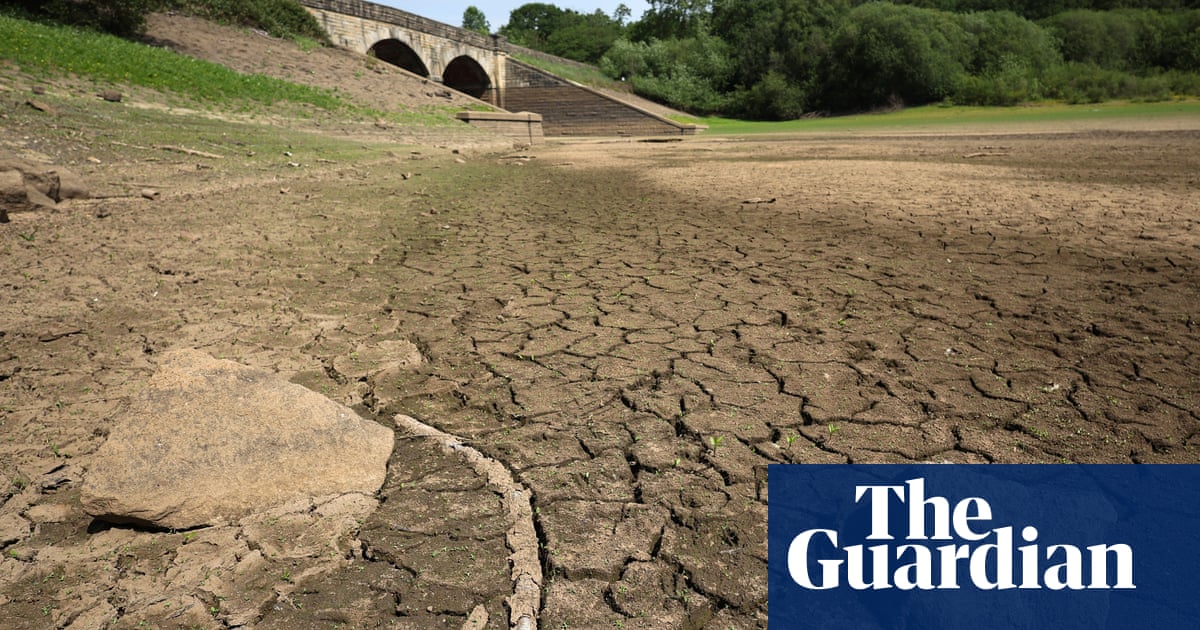Four areas of England are now in drought as the East and West Midlands have joined Yorkshire and the north-west.
Continuing hot and dry weather was a hazard to crop production and wildlife, ministers said, as they urged water companies to put hosepipe bans in place to conserve water as levels deplete.
The water minister, Emma Hardy, said: “I have asked the national drought group to step up its response to ensure we are successfully managing the impacts of ongoing dry weather. Water companies must now take action to follow their drought plans – I will hold them to account if they delay.”
England had a very hot and dry June. Rainfall was 20% less than the long-term average for the month, and it was the hottest on record for England. Reservoir levels have continued to fall as increased water use meets lack of rain, with overall storage across England at 75.6%. This is below the level during the severe drought year of 2022, when they were at 77% capacity at this point in the summer. The Guardian recently revealed that England’s reservoirs are at their lowest levels for a decade.
The government’s national drought group met on Tuesday to discuss their response to the prolonged dry weather, which has caused mass fish die-offs, low river flows, dangerous algal blooms and the beginnings of crop failures.
The Department for Environment, Food and Rural Affairs (Defra) said it was likely that yields for farmers would be lower than last year, particularly non-irrigated grains and straw.
after newsletter promotion
Nature was also suffering, Defra said. Wildfires, drying up wetlands and coastal sites, and the loss of breeding seasons for rare species have all been seen. The national drought group is asking recreational water users including anglers, swimmers and boaters to report any environmental problems they see, such as fish in distress.
Officials said on Monday that as many as five of the Environment Agency’s 14 areas of England were expected to go into drought this summer after the hottest June since records began in 1884.
Three heatwaves, which tend to increase water consumption, combined with a lack of rain, means that large swathes of England are heading towards drought and the damage to the environment that entails.
Helen Wakeham, the Environment Agency’s director for water and the national drought group chair, said: “This has been the driest start to the year since 1976, and we need to make sure our water supplies can sustain us through the summer.
“Today I have asked all the partners who make up the national drought group to step up their operational response to manage the drought and use water wisely. Environment Agency teams are out on the ground actively monitoring river levels and working to ensure there is enough water for the people and the environment.”
Source link
